Graffiti at Govinda, Graffiti in Havana
The Pump Me Up exhibition of D.C. subculture in the 80’s ends it’s run at the Corcoran Gallery of Art this weekend. Everyone at Govinda Gallery enjoyed the exhibition, and it shined a light on a number of 80’s subculture exhibitions that Govinda has hosted. Here is a review from the Washington Post on the Graffiti show we had in 2001, the first of it’s kind in Washington, D.C.
 Copyright © Siek. All Rights Reserved.
Copyright © Siek. All Rights Reserved.
Arts Beat
Graffiti at Govinda, Coming In off the Streets
by Nicole Miller
Tuesday, February 22, 2001
Nicholas Posada took a tour some of his artistic handiwork last week. The first stop was behind a commercial building on U Street, another was down an alley off 16th Street NW, then under the P Street bridge east of Dupont Circle.
For five years, Posada, 21, has been spray-painting in the Washington area—sometimes with a building owner’s permission, most times not. Graffiti is illegal in the District of Columbia.
But Posada and his work recently landed in Georgetown—legitimately. His and the works of five other area graffiti artists are on display at Govinda Gallery.
“It really is a genre,” says gallery owner Chris Murray. “They’re all street taggers.”
Murray wanted to host a graffiti show, in part, to give the artists a legal venue, but he also defends their painting on the streets. He believes they choose the appropriate locations.
“It’s in places that frankly look better,’ Murray says. “Technically, whether its legal or illegal, to me it looks good.”
Murray met Posada at the gallery two years ago at a surprise party for Murray’s son’s 16th birthday. He found Posada pouring over art books in the back room; they started talking about the gallery and graffiti art.
A year later they firmed up the dates for a show, and Posada rallied five other artists to participate. The five—Jonny Real, Sest, Siek, SMK and Vove—simply use their “tags” in the show.
“These are the people I respect the most,” Posada says. The show, he adds, is only a “reflection of graffiti.”
“You can’t capture graffiti in a gallery—graffiti is under the bridge,” says Posada, who looks rather clean-cut with his short brown hair, Tommy Hilfiger jacket and Reeboks. His jeans have just a few splatters of paint.
“I like finding places that are real chilled out, relaxed and hidden,” says Posada, works at a deli and waits tables at a restaurant.
He wavers on the question of illegal tagging. In one breath, he says, “It’s kind of childish.” In the next, “It’s real vibrant and impulsive—emotional.”
He settles on: “It’s like a big beast you can’t tame.”
Neil Trugman, a retired D.C. police officer who investigates gangs, teaches other officers about graffiti. A main distinction for the authorities, he says, is between gang graffiti (usually in a single color and used to leave messages) and tagging, often multicolored nicknames composed of big “bubble” letters.
Most taggers aren’t members of a gang, Trugman says. They’re usually kids just trying to top one another with their artistic style and obscure locations.
“They have a talent that doesn’t need to be put on cement walls, it needs to be put on canvas,” he added.
Graffiti art, commonly associated with hip hop music, derives from a tradition of subway art in New York in the 1970s. Many cities have a “hall of fame” or “wall of honor” where graffiti artists do their best work. The District’s “hall of fame” is in a train tunnel in L’Enfant Plaza. Police try to keep taggers out, but on weekend nights you can smell the fresh paint, Trugman says.
Posada’s tag is “Tale,” a shorter version of his nickname, “Nicktale.” Besides being a way to identify themselves to other artists, the short names can be written fast to avoid being caught.
Trugman emphasizes that officers often use counseling to try to deter taggers. But police do make arrests, and those convicted often face community service, probation, fines, jail time or a combination therof. Posada has been arrested four times but doesn’t think he’s doing anything wrong.
He says he started out just “throwing up” his name everywhere. Now, however, he says he does it for the art.
He hopes the gallery show will produce other legal artistic opportunities.
Posada says some of his associates don’t think he should discuss their actions publicly, but he wants people to understand the art.
“I feel I’ve become a better person because of it,” he says.
Posada still paints illegally, too, though he adds, “I might grow out of it.”
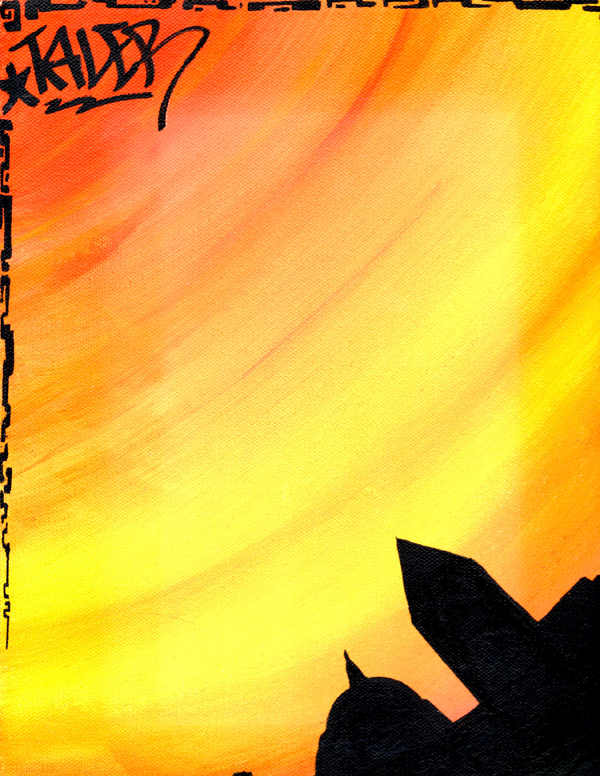 Copyright © Tale. All Rights Reserved.
Copyright © Tale. All Rights Reserved.
Our Back Room corespondent in Havana photographed some recent graffiti in the capital city of Cuba, and we present it here as part of our tribute to the Pump Me Up exhibition.
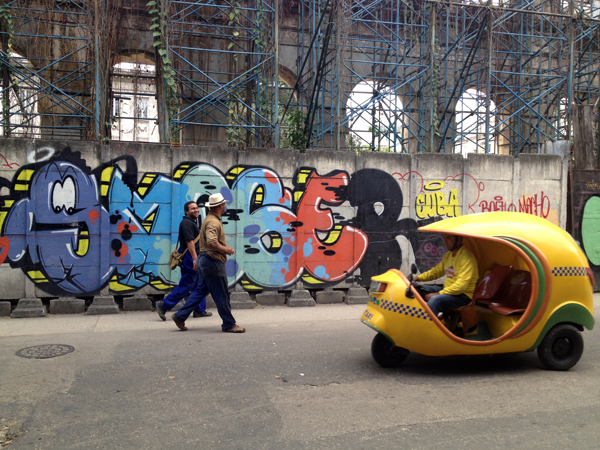 Copyright © Celia Sanchez. All Rights Reserved.
Copyright © Celia Sanchez. All Rights Reserved.
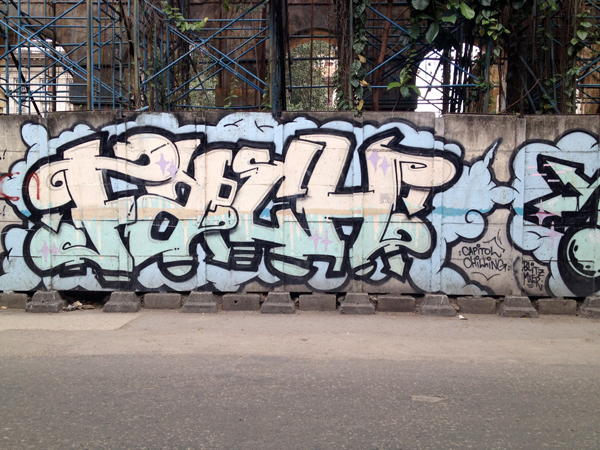 Copyright © Celia Sanchez. All Rights Reserved.
Copyright © Celia Sanchez. All Rights Reserved.
 Copyright © Celia Sanchez. All Rights Reserved.
Copyright © Celia Sanchez. All Rights Reserved.
 Copyright © Celia Sanchez. All Rights Reserved.
Copyright © Celia Sanchez. All Rights Reserved.
 Copyright © Celia Sanchez. All Rights Reserved.
Copyright © Celia Sanchez. All Rights Reserved.
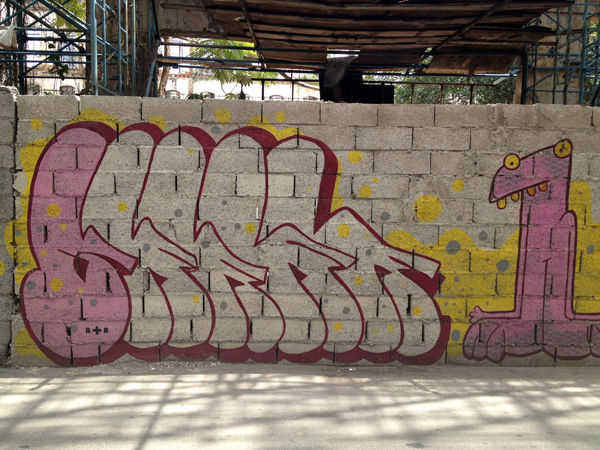 Copyright © Celia Sanchez. All Rights Reserved.
Copyright © Celia Sanchez. All Rights Reserved.
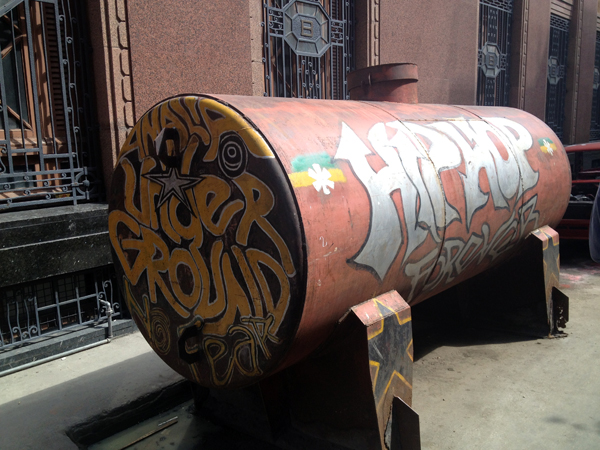 Copyright © Celia Sanchez. All Rights Reserved.
Copyright © Celia Sanchez. All Rights Reserved.
 Copyright © Celia Sanchez. All Rights Reserved.
Copyright © Celia Sanchez. All Rights Reserved.


